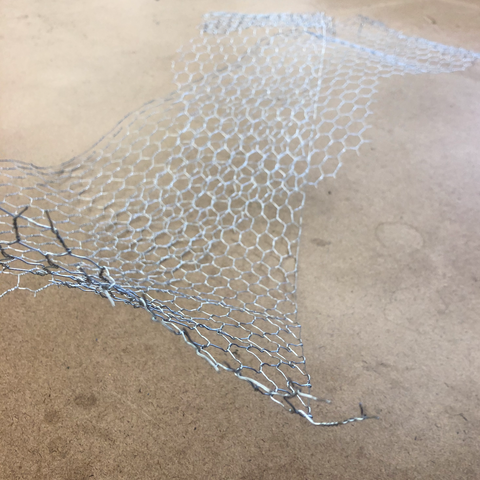Politics of Light | "Remember Me"
- Son Luu

- Oct 24, 2019
- 4 min read
Updated: Dec 25, 2019
Class: Light as a Medium of Art: Way of Seeing Now
Instructor: James Clar

How do we express social, political concepts through light?
Art has been an effective means (for many activists) to express, educate, communicate and create impacts around social and political issues. These include different forms of media that involve video and sound. What about light as a social, political art form? For production No.2, we are taking on the challenge to express social/political concepts through light (and media).
Concept
Alzheimer's disease is one of the top six leading death causes in the U.S. and is on the rise throughout the world. Alzheimer's disease is believed to be the biggest epidemic as of right now. The untold story here is: with no effective treatment and preventive care, Alzheimer's is the most expensive disease in the US, exceeding the cost of both cancer and heart disease. At the current projection of 14 millions Alzheimer's patients by 2050, it could sink the healthcare economy in the U.S if there is not a cure soon enough.
Reflections on Alzheimer's and Human Memories:
1. Alzheimer's - the epidemic bubble and its social impacts
2. Memory storage - machine memory vs human memory - hardware vs human brain
3. Alzheimer's patients vs their caretakers - whose story to be told?
4. Technology and Alzheimer's patients
Inspirations
I was inspired by the song "Remember Me" written for the 2017 animated Pixar film Coco, written by Robert Lopez and Kristen Anderson-Lopez. It relates to the emotional response I would like to create through the light sculpture.
"Remember Me" is a complete sentence. It can be a question "remember me?" when you ask someone whether or not they remember you. It can also be a request statement to someone to not forget me, "remember me!". That someone could be your family member, a friend, but it could also be yourself. How would it feel like to forget your inner self? How would it feel like to not be able to recognize yourself or lose the memory of it? Doing some research and reading about a few stories of Alzheimer's patients, I learned that one of the utmost wishes a patient, especially one who is well-educated and highly well-regarded in their intellectual ability, is for people not to forget that about them, about how intelligent and well-spoken they used to be, and the contributions they've made when they were well. Both of my parents are proud educators who spent their lifetime learning and teaching and sharing knowledge. How devastating it would be to know that your knowledge and intellectuality - the things that solely belong to you with the assumption that no one can take them away from you, will be lost very soon, and nothing can stop it from happening.
Pixelated art:
Jonathan Sharlin’s “Portrait Narratives: A Photographic Installation of RI Holocaust Survivors.

'Idiomatic Portrait' by Natalie Voelker

Light Form
The sculpture will consist of 2 primary parts:
1. Mirror panels: the mirror panels create distorted versions of an audience's live portrait as they look at these mirror panels. The portrait and its distortion change as the audience moves around, trying to look at themselves in the mirror. The intent is to evoke a feeling for what it would be like not to be able to see our own images clearly anymore. How would it feel like to lose our inner self? How would it feel like to lose the memory of our own image, and not know who we are anymore? No matter from what angle one is looking at the mirror, there would be a new distorted version of their image.
These distorted images will be created by stacking smaller pieces of mirror on top of a larger mirror panel. There is no digital technology behind the effects.
2. The stream of memory pieces: From the top of the mirror panel, the pieces of human memory seem to gather into a stream or flow of data, flowing away. Yet, they are all being captured into a box hung at the very top.
Human memories are so fragile. They are created through life experiences, some are happier or more tragic than others, but it feels like they are all perishable so easily. And, once they're gone, nothing can stop or retrieve it. Feeling sympathetic for such fragility, I want to create a metaphorical box that would capture and save all these lost human memories.
Technical Testing
Every project can be an opportunity to learn or apply a new technology tool as long as it is a good fit for what is to be achieved. The prompt this time for politics of light intensifies this challenge by asking us to experiment with TouchDesigner DMX control output. I am excited about learning this application for controlling light effects.
The equipment below is what supports sending data from TouchDesigner to addressable LED lights via its DMX control output. The equipment include:
- Enttec DMX Pro and a DMX512 decoder: Enttec DMC Pro is where data from TouchDesigner is sent through to LED lights. But before the data is sent through to the LEDs, it goes through the DMX decoder that is responsible for controlling the amount of voltage that goes into each pixel to create the light colors as wanted.
- Another tool to do this job is the LeDMX4 Pro from DMXKing, but I ended up getting more successful test results with the Enttec DMX Pro and the DMX decoder.
The Teensy 3.2 and the Teensy 3.2 OctoWS2811 Adaptor used with TouchDesigner GeoPix through ethernet cable is another option that could also work. However, this option works so much better on Windows system than Mac OS.
Below is the test I did on a Windows computer. It is definitely a low-cost option that is effective enough for smaller projects. However, for Mac users, Geopix is not stable.
Fabrication and Installation
Materials
The key materials for the installation are:
- Mirror panels: to bring distorted portraits of audience to live without digital means
- Wire Mesh: to create structure and texture for the sculpture
- Copper wires: for hanging mirror panels
- Aluminum box
All materials are chosen to complement one another's aesthetics. Copper wires, wire mesh and aluminum box provide a consistent look to the overall sculpture.
Final Product

Interaction with audience:

































































Comments